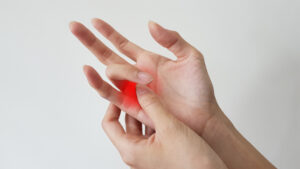
Have you ever experienced a painful clicking or locking sensation in your finger? If so, you may be dealing with a condition known as trigger finger. Trigger finger, medically known as stenosing tenosynovitis, is a common hand condition that affects the tendons in your fingers and thumb. In this blog post, we will delve into the causes, symptoms, and explore the role of occupational therapy in the treatment of trigger finger.
What Are the Causes of Trigger Finger?
Trigger finger is often caused by repetitive hand movements or activities that strain the tendons in the finger. However, certain factors can increase the risk of developing this condition, including repetitive movements, medical conditions, and finger anatomy.
The Symptoms of Trigger Finger
The primary symptom of trigger finger is the finger getting stuck in a bent position and suddenly snapping straight with a clicking or popping sensation. Additional symptoms may include finger stiffness, tenderness and swelling, and finger locking.
The Role of Occupational Therapy in Treatment for Trigger Finger
Occupational therapy plays a vital role in the treatment of trigger finger, aiming to restore hand function and alleviate pain. Here are some ways occupational therapy can help:
- Activity Modification: Occupational therapists can assess your work and daily activities to identify any repetitive or strenuous tasks that may be exacerbating your trigger finger. They can suggest modifications to reduce strain on the affected finger, such as changing grips, using ergonomic tools, or implementing rest breaks.
- Hand Therapy: Experts in hand therapy can guide you through specific exercises to improve finger mobility, strength, and coordination. These exercises help to stretch and strengthen the affected tendons, reducing symptoms and preventing further complications.
- Custom Splinting: Therapists can fabricate custom splints or braces to support the affected finger, providing rest and protection. These splints are designed to immobilize the finger in a functional position while allowing movement for other fingers, promoting healing and preventing deformities.
- Joint Protection Techniques: Occupational therapists can teach you joint protection techniques to minimize stress on the affected finger joints during daily activities. These techniques involve modifying grasping patterns, using assistive devices, and employing adaptive strategies to reduce strain and promote optimal hand function.
- Ergonomic Assessment and Recommendations: A good occupational therapist can evaluate your workstation and provide recommendations for ergonomic adjustments to ensure proper hand and finger alignment during work-related tasks. These adjustments may include changes in desk height, chair posture, keyboard and mouse positioning, and tools used to reduce strain on the fingers.
- Pain Management Strategies: Occupational therapists can educate you on pain management techniques, such as heat or cold therapy, transcutaneous electrical nerve stimulation (TENS), and activity pacing. They can also provide education on the use of assistive devices, such as splinting or adaptive tools, to alleviate pain during daily activities.
Contact Kinetic Edge Physical Therapy for Trigger Finger Treatment
Occupational therapy plays a crucial role in the comprehensive treatment of trigger finger. By addressing the underlying causes, modifying activities, providing therapeutic exercises, and offering ergonomic recommendations, occupational therapists help individuals manage symptoms, regain hand function, and improve their overall quality of life. If you suspect you have trigger finger, schedule a free screen with one of our occupational therapists today by going to https://www.kineticedgept.com/free-kinetic-screen or calling 866-588-0230.



